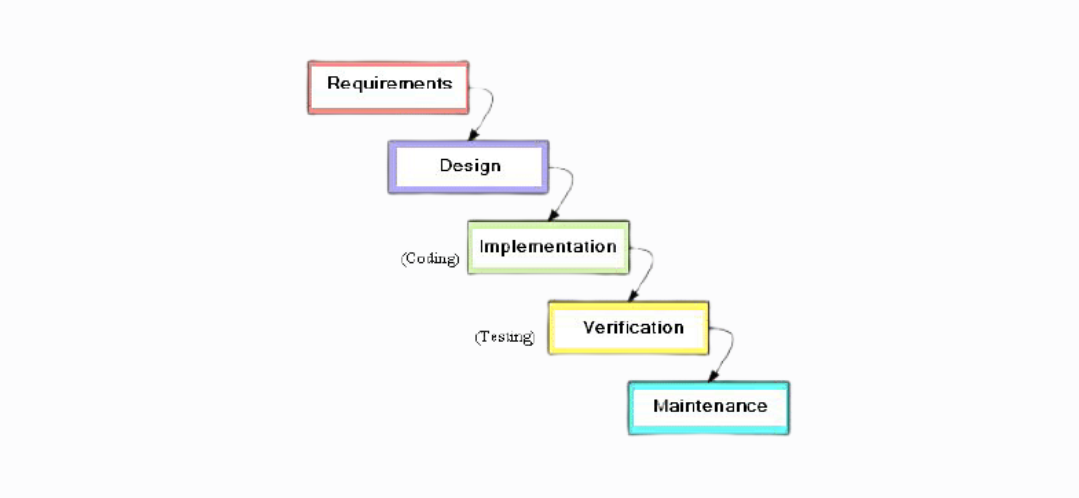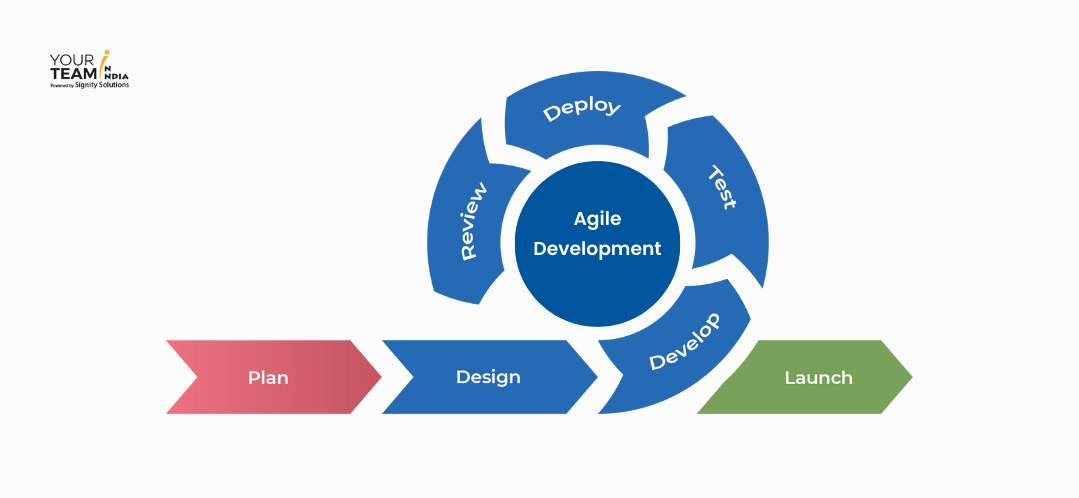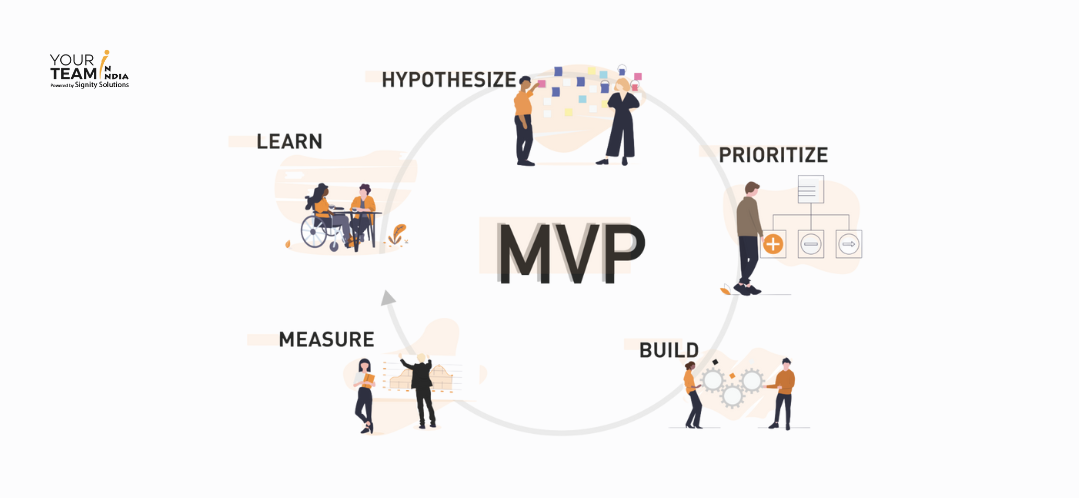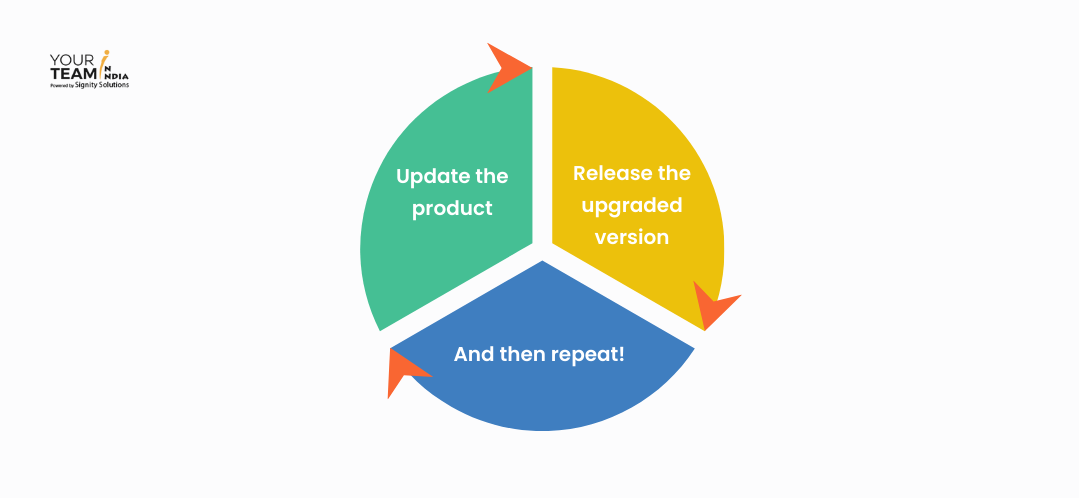Quick Summary: In the evolving landscape of software applications, employing effective development strategies is crucial. This blog offers insights into top software development strategies, providing tips for a streamlined and successful development process.
Introduction
Developing software is an intricate process with many obstacles at every corner.
Even simple software takes ample time to build. The ideation, the process definition, the execution, and ensuring quality, everything requires attention, time, and effort.
But even after following the process and everything aptly, what if the outcome shows a run time error?
Or what if there is an issue with the quality or execution?
And what if the developed software cannot handle the escalation in the user base?
Well, for any of the concerns encountered with the software outcome, the problems can certainly break the dinero of the brand. And that is where the real challenge lies.
Key Takeaways
- Creating an MVP initially can save a lot and provide businesses with feedback on how their idea will flourish in the market.
- Having a software development strategy can make the team feel less stressed and provide them with a structure when working on a project.
- With an effective software development strategy, businesses can experience a quick software development process with a lower workload, high-quality outcomes, and a faster time to market.
So, what can be done in order to maintain the quality of the developed software? How can things be handled?
Well, if you are also looking for answers to these questions, look no further!
By putting various software development strategies in place, businesses can score both - quality software outcomes and lower time to market.
But before that, don’t forget to
- Understand the project requirements and goals
- Identify the end-user requirements
- Evaluate every available resource
- Analyze potential risks
- Have risk mitigation strategies
In place.
Let us explore some popular software development strategies and tips on implementing those strategies appropriately to ace the digital world.
Popular Software Development Methodologies
In the ever-changing field of software development, multiple methodologies influence project management and execution. Understanding these methodologies is imperative for effective and successful development. Below are the two most popular approaches that developers often use.
Waterfall Model
The waterfall model is a linear and sequential model that performs a requirement gathering analysis and documentation phase to define all the requirements upfront. Waterfall software development methodology requires developers to execute the step-by-step SDLC process.
This model is divided into five different phases
- Requirements gathering and analysis
- Design
- Implementation
- Verification
- Maintenance and post-deployment support

Since each stage must be completed before moving to the next one, managing the phases of the model is easier.
The only catch with the waterfall model is that it is less adaptable to any changes, making the alterations time-consuming and expensive. It rarely allows modification of any minor aspect of the software development strategy. Therefore, it is suited for projects where the requirements are clear in the initial stages and are not susceptible to change later.
Agile Methodology
Agile methodology is one of the most popularly used methodologies. It is currently the most dominant methodology in offshore software development companies.
Agile methodology allows for any changes to be performed even in the later stages of the software development process lifecycle. This methodology breaks down a project into user-focused iterations and delivers value through a continuous delivery model.

This approach encourages adaptation and constant feedback, ensuring the final product meets the requirements. This helps keep the development teams aligned and identify and resolve issues easily while continuously improving their workflows.
Ready to elevate your development game?
Unleash the power of software development methodologies and hire developers who bring innovation, collaboration, and rapid results to your projects!
Tips For Effective Software Development Strategy
Embarking on a software development journey requires a well-crafted development strategy. Consider the following tips to ensure a smooth and successful development process:
1. Introduce an MVP first
Before developing a feature-rich application, getting the idea tested initially is what provides a successful outcome. That is why it is a great deal to begin with an MVP first.
MVP is an initial functional version of the application with all the necessary operations.
This certainly brings the advantage of saving money and time for the business.

Simply putting,
- Put your idea to execution
- Plan to test
- Get valuable customer feedback
- Make improvements based on the feedback
- And incorporate the feature-rich capabilities into the product.
Connect with a reliable MVP app development company and release the first functional version of your app with ease.
2. Clearly define the requirements and a roadmap
One of the crucial elements of creating an effective software development strategy is to build a project plan to work on.
Have an in-depth conversation with the client, define the project scope, and gather requirements as the first step of the project implementation.
Develop a complete roadmap for the project development, defining its duration without any unrealistic expectations. This allows the developers to split the tasks, create a workable timeline, and provide the clients with real insight into the progress of the project.
Pro-tip: Having a project manager in place makes tracking the development team's progress easy while maintaining the deadlines making the road map implementation effective.
3. Consider the architecture type
Before formulating a complete plan, deciding on the software architecture beforehand is crucial to make the final plan of creating an application effectively.
The architecture identifies how the software program's components will be developed and connected together. Below are the two main architectures that developers often use.
Monolith architecture is the one in which all the services and features are developed at once with the same technology stack.
Microservice architecture is the one in which application components are developed independently but have the ability to communicate with each other.
Therefore, it is essential to choose an architecture initially so that the plan of action can be prepared accordingly.
Therefore, it is essential to choose an architecture initially by understanding the thorough differences between monolithic and microservice architecture so that the plan of action can be prepared accordingly.
4. Use modern development methodologies and tools
Implementing the appropriate methods and relevant resources is crucial. There are ample development tools that can make the entire implementation process more productive and easily streamline the operations. Scrum, agile, and kanban are among a few examples that might be used for the appropriate project management.
While the traditional ways are great for development, incorporating the development tools into the development process can speed up the process and produce an outcome faster.
Offshore software developers often keep themselves updated with all the trends and technologies to ace the digital world; that is why businesses usually count on software development outsourcing rather than just sticking to traditional in-house software development.
5. Select the right tech platform
The difference in the entire development process pace can be anywhere from 3 to thirty times based on the choice of technological platform.
Therefore, it is crucial to choose a tech platform wisely. It is suggested to use a four-quadrant matrix to compare and contrast the platform.
Essential to note!
- Maintain backward compatibility with the existing tech stack.
- Consider how much it will cost to maintain the selected tech platform over time and how it will respond to any issues.
- Also, how often will it process the upgrades?
6. Apply automation where required
Apply automation where required or wherever it is possible!
Embracing automation into the implementation, design, and testing phases of the workflow enhances the entire operation process.
For instance, containerization, when compared to virtual machines, is much more efficient. In order to facilitate the maintenance and deployment of complicated systems, containers divide all the software libraries and operational files.
7. Break up the deliverables
Rather than handling the entire project as a whole, iteratively dividing the project deliverables is one of the effective ways to handle the project.
Creating and delivering a release-ready and high-quality deliverable with the desired set of features can allow the developers to present something sooner. While reducing the total amount of time it takes to deliver the task, breaking up the deliverables can bring continuous feedback to the developer so that they can work on the improvements at an early stage.
8. Update, release, and repeat
Are you done with the project's development process? Can your project be updated with some new features or upgrades?
Don't just sit back. Even though the product is deployed, there is always a chance of improvement in it!

9. Consider software maintenance beforehand
Many organizations seek deployment at an early stage and release the software in the market without even considering the software maintenance, just for one advantage of having a cost-effective solution.
But do you know that with time, they find themselves in the middle of nowhere?
That is why considering the software maintenance beforehand is essential!
It is like investing in the after-release of the product to ensure quality and excellent user experience.
Pro-Tip: Choose a software development outsourcing partner that offers high-quality project outcomes along with post-deployment support and maintenance.
Bottom Line
The end goal of any software development process is to provide an end product that is both functional and in line with the requirements. However, the process of creating a high-quality software product outcome is a success when you incorporate the above-mentioned strategies appropriately.
Businesses can streamline the processes and expect a more cost-effective outcome. With these tips, the time-to-market estimates, development time quality, and error reduction, everything is possible, fueling a more efficient development outcome.
While sharing all the tips to ace the development process, Your Team In India is a one-stop solution incorporating all these tactics to ensure a fruitful outcome.
So, no more juggling online! Connect with the YTII dedicated development experts and begin your digital journey today!
Elevate Your Development Experience
Supercharge your project with skilled developers proficient in Agile methodology!






